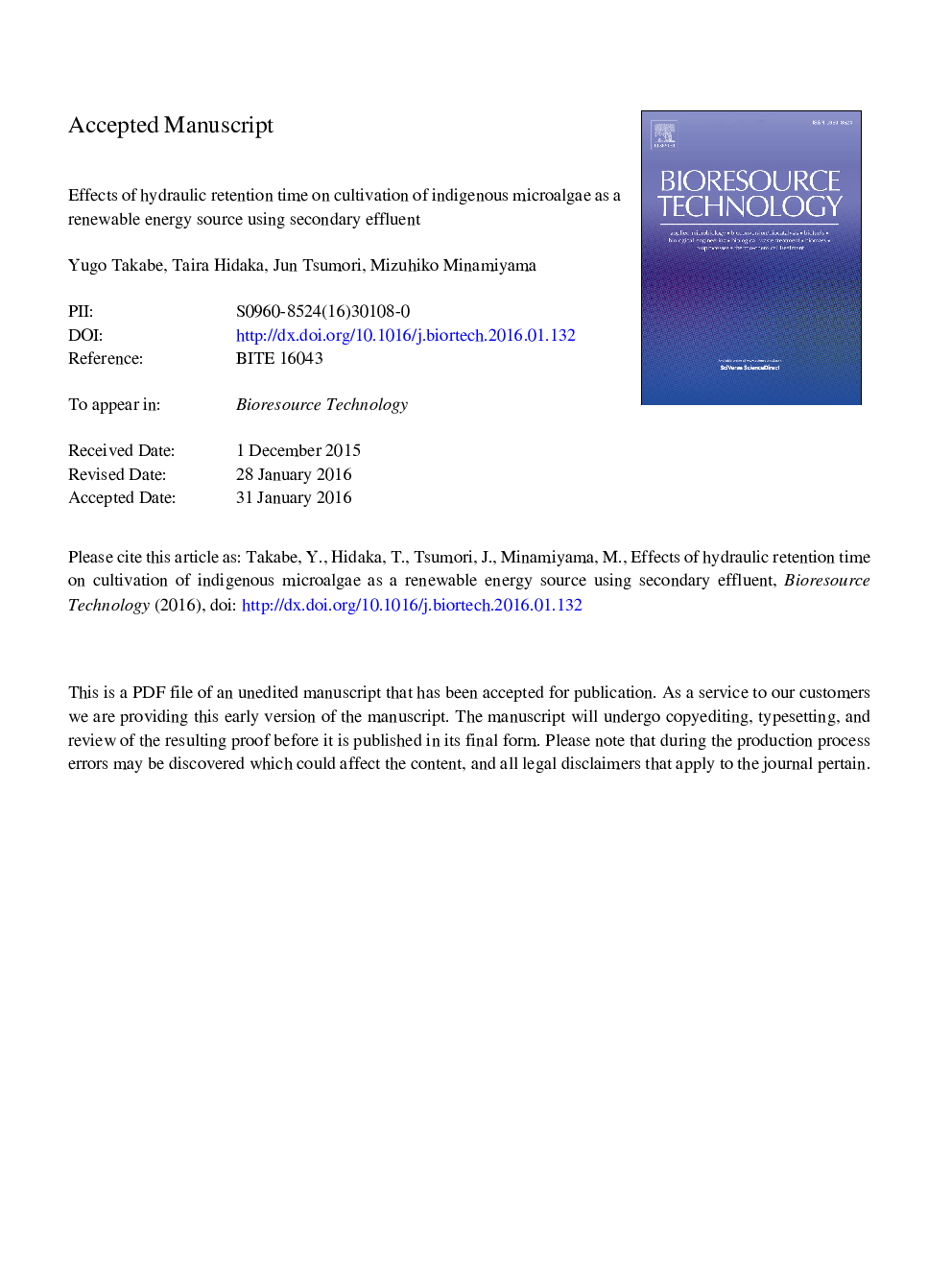| Article ID | Journal | Published Year | Pages | File Type |
|---|---|---|---|---|
| 7072322 | Bioresource Technology | 2016 | 42 Pages |
Abstract
Secondary effluent from wastewater treatment plants is suitable media for cultivating microalgae as a renewable energy source, and hydraulic retention time (HRT) control in culture is important to conduct well-planned outdoor indigenous microalgae cultivation with secondary effluent. This study revealed cultivation characteristics under various HRT by continuous 6-month experiments. In addition, effects of HRT on cultivation were determined by a mathematical model that described indigenous microalgae growth. Cultivated biomass mainly consisted of Chlorophyceae and its detritus regardless of HRT, and 5.93-14.8 g/m2/day of biomass yield was obtained. The cultivated biomass had a stable higher heating value of 16 kJ/g. Sensitivity analysis of the model suggests that HRT control had great effects on biomass yield, and 2-3 days of HRT were recommended to obtain maximum biomass yield under certain weather conditions (temperature: approximately 12-25 °C and solar radiation: approximately 8-19 MJ/m2/day).
Related Topics
Physical Sciences and Engineering
Chemical Engineering
Process Chemistry and Technology
Authors
Yugo Takabe, Taira Hidaka, Jun Tsumori, Mizuhiko Minamiyama,
